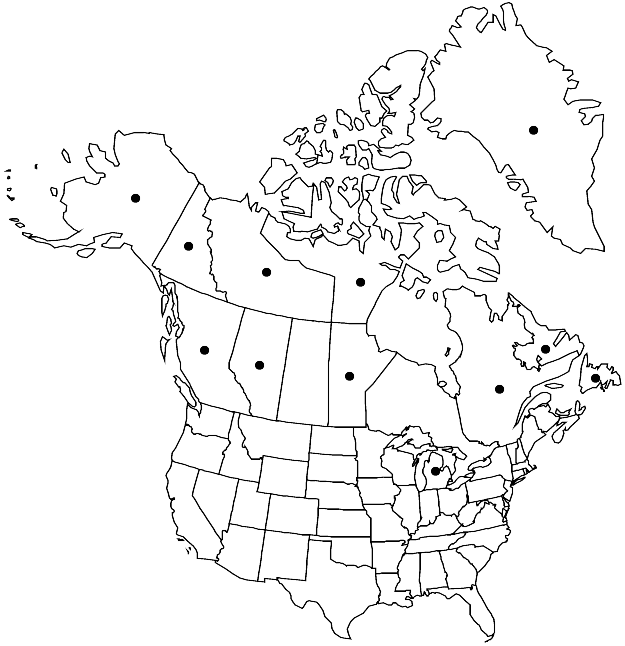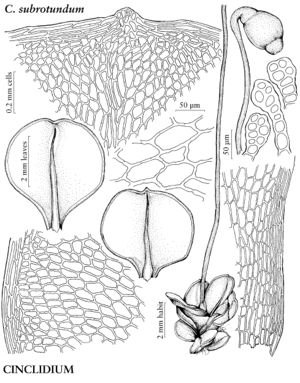Difference between revisions of "Cinclidium subrotundum"
Bot. Not. 1868: 72. 1868.
FNA>Volume Importer |
FNA>Volume Importer |
||
| Line 27: | Line 27: | ||
|elevation=low to moderate elevations | |elevation=low to moderate elevations | ||
|distribution=Greenland;Alta.;B.C.;Man.;Nfld. and Labr.;N.W.T.;Nunavut;Que.;Yukon;Alaska;Mich.;Europe. | |distribution=Greenland;Alta.;B.C.;Man.;Nfld. and Labr.;N.W.T.;Nunavut;Que.;Yukon;Alaska;Mich.;Europe. | ||
| − | |discussion=<p>Cinclidium subrotundum is distinguished by its broadly elliptic, nearly orbicular or spatulate leaves usually ending in a small, blunt apiculus. When present, the subglobose capsules are also diagnostic.</p> | + | |discussion=<p><i>Cinclidium subrotundum</i> is distinguished by its broadly elliptic, nearly orbicular or spatulate leaves usually ending in a small, blunt apiculus. When present, the subglobose capsules are also diagnostic.</p> |
|tables= | |tables= | ||
|references= | |references= | ||
| Line 51: | Line 51: | ||
|publication year=1868 | |publication year=1868 | ||
|special status=Selected by author to be illustrated | |special status=Selected by author to be illustrated | ||
| − | |source xml=https://jpend@bitbucket.org/aafc-mbb/fna-data-curation.git/src/ | + | |source xml=https://jpend@bitbucket.org/aafc-mbb/fna-data-curation.git/src/8f726806613d60c220dc4493de13607dd3150896/coarse_grained_fna_xml/V28/V28_349.xml |
|genus=Cinclidium | |genus=Cinclidium | ||
|species=Cinclidium subrotundum | |species=Cinclidium subrotundum | ||
Revision as of 18:04, 18 September 2019
Plants 3–8(–12) cm. Stems dark reddish brown. Leaves green, reddish brown, or black when old, erect-spreading, ± flat, not strongly reflexed when moist, broadly elliptic, ± orbicular, spatulate, occasionally ovate or obovate, 3.5–6 mm; base short-decurrent; margins plane or weakly recurved, 2- or 3-stratose; apex rounded, obtuse, or rarely retuse, apiculate or sometimes not, apiculus blunt; costa percurrent, excurrent, or rarely subpercurrent; medial laminal cells elongate, (40–)70–110 µm, in diagonal rows, weakly collenchymatous; marginal cells short-linear or linear, in 3 or 4 rows. Sexual condition synoicous. Seta yellowish, 4–6 cm. Capsule yellowish, subglobose, 1.5–2.5 mm. Spores 25–70 µm.
Phenology: Spores 25-70 µm, mature summer.
Habitat: Peat and deep organic soil to shallow wet mineral soil on rock in fens, along river banks
Elevation: low to moderate elevations
Distribution

Greenland, Alta., B.C., Man., Nfld. and Labr., N.W.T., Nunavut, Que., Yukon, Alaska, Mich., Europe.
Discussion
Cinclidium subrotundum is distinguished by its broadly elliptic, nearly orbicular or spatulate leaves usually ending in a small, blunt apiculus. When present, the subglobose capsules are also diagnostic.
Selected References
None.
